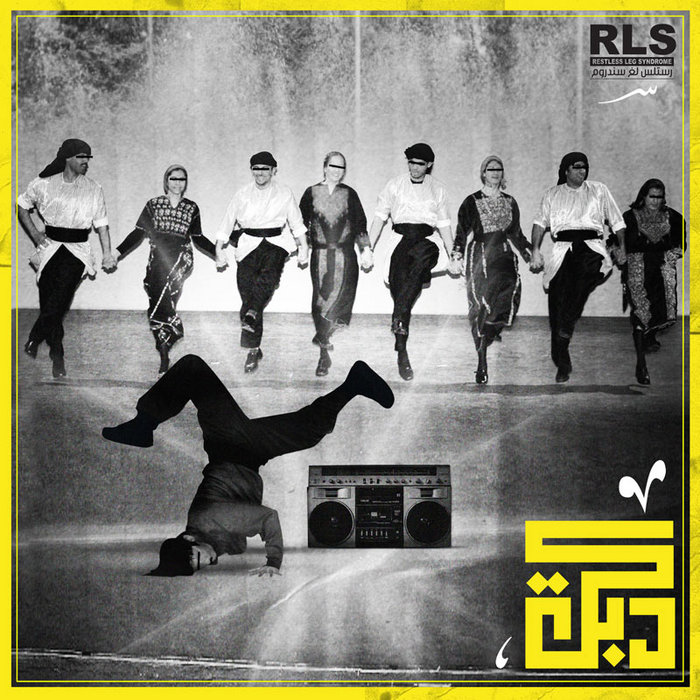
Dabkeh – Restless Leg Syndrome
this blog is GROOVY – check out great Soul, Funk, Jazz, Hip Hop, Bass, Breaks , Reggae, House n many more TUNES
Hey there, music lovers! Grab your dancing shoes and get ready to groove as we dive into the lively world of Dabke. This traditional Levantine folk dance is not just a spectacle for the eyes; it’s a vibrant tapestry woven with history, culture, and some seriously catchy rhythms. Let’s untangle its roots, strut through its evolution, and sprinkle in some quirky tidbits about the musicians who keep this energetic art form alive.
At its core, Dabke is more than just a dance—it’s a cultural celebration that brings people together in joyful expression. Originating from Lebanon, Palestine, Syria, and Jordan (talk about regional flair!), it combines staccato footwork with synchronized movements that tell stories of love and life. Picture this: people linking arms or holding hands as they stomp around in perfect unison to live music played on traditional instruments like the oud (a pear-shaped string instrument) and derbakeh (the hand drum). The vibe? Electric!
Dabke’s roots can be traced back centuries when rural communities would gather to celebrate harvests or weddings. Think bonfires under starlit skies where tales were passed down through rhythmical feet instead of written words. The word “dabkeh” comes from Arabic meaning “to stomp” or “to step”, so you know it’s all about making noise—and having fun while doing it!
While primarily a group activity (the more dancers the better), each region has put their own twist on Dabke styles over the years:
The rich variety means there’s always something fresh for everyone out there busting their best moves.
Fast forward from those ancient gatherings into modern times: despite dabbling with technology like electronic music samples or synth beats in performances today—this genre still proudly wears its folkloric heritage like an old-school badge of honor! Majestic indeed.
From local festivals to international stages now graced by professional troupes showcasing daring leaps across borders; however grown-up engines don’t mean taking away tradition – far from it! Instead artists blend earthiness with contemporary flair bringing new audiences along for every groovy ride possible.
You betcha! Behind every rhythm-maker lies an amusing anecdote worth sharing:
Human Jukeboxes: Some musicians have taken things one step further by incorporating voice machines into their performances—a dabble here/dabble there = instant ‘human jukebox’ status achieved!
Snazzy Outfits Gone Wrong: There was once a famous Lebanese performer who wore such tight pants during his act that he accidentally ripped them mid-dance during an epic solo move… fortunately he laughed it off but hey talk about being fully committed right?
Dance-Off Hazards: Imagine performing at events where audience members suddenly decide they’re pros too—not uncommon among enthusiastic fans trying hard not only join in but sometimes steal limelight completely resulting hilariously awkward bumps happening everywhere!
Mixed Tape Madness: In their early days before playlists ruled supreme—it wasn’t unusual for performers to accidentally mix up tracks leading them swing wildly between tempos halfway through while both dances explode spontaneously crashing against each other creating hilarious chaos amongst both sets – imagine pure pandemonium unfolding live on stage until someone finally reigned those beats back in sync again!
Instrumental Love Affairs: Many musicians develop crazy bonds with their instruments — reportedly one player even constructed romantic songs dedicated solely towards his beloved derbakeh claiming emotions run deep when you’re making music together…who knew drums could feel?
As time raced forward into our current day everything fuses including genres! World Music Festival circuits embraced these age-old traditions introducing diverse sounds worldwide thus reshaping how we view artists alongside exploring mashups connecting different styles seamlessly giving birth uniquely unforgettable experiences enhancing enjoyment altogether—now that’s what I call living vibrantly!
Dabke dancers rocking out alongside DJs scratching turf provide funky electric thrill mixing traditional tastes fused onto urban vibes leaving many audiences craving more excitement beyond anything imaginable before… departing every performance smiling widely inspired by interconnectedness found even within rhythmic unlockings made!
So next time you hear that infectious beat kickin’ off somewhere nearby—don’t hesitate long before diving headfirst into embracing joy surrounding playing around/imbuing sacred sounds vibrating throughout hearts souls evoking connection amongst heavy laughter shared beating true cultures celebrating life itself via skilled stepping derived historical communities past lives offering radiant vivid experiences carried forth generations later straight ahead grooves forever thrilling onward … now that’s magical alright!
Dabke isn’t just dance; it’s unity wrapped up tightly within beautiful melodies waiting beckoning all curious enough jump right inside experience firsthand why moments come alive grooving sure brightening spirits along lovely journeys filled heartwarming memories embrace evermore along way … let’s boogie folks!

Dabkeh – Restless Leg Syndrome